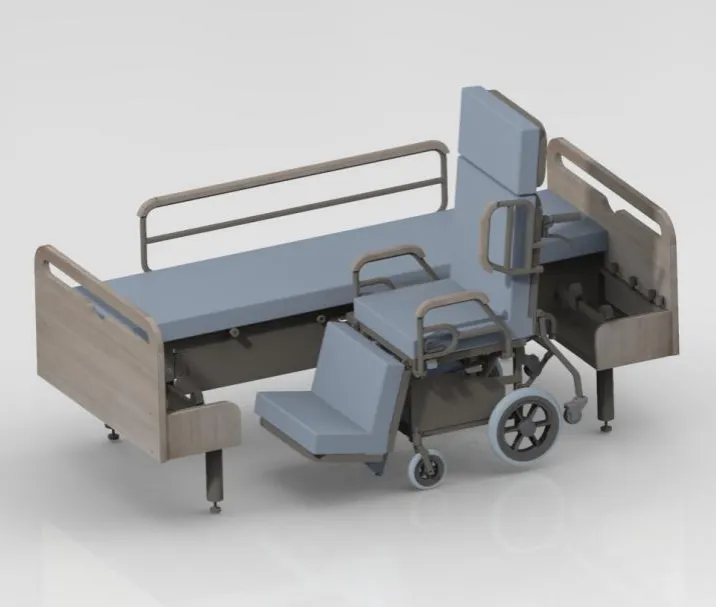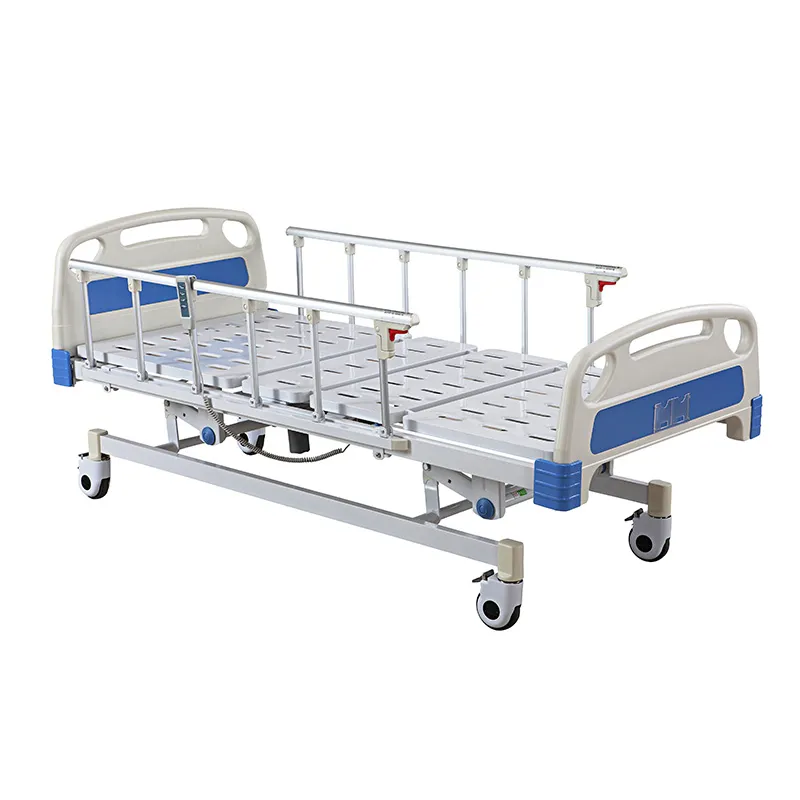
How do quality hospital beds prevent or reduce bedsores?
2024-11-04 15:30
For many bedridden patients, bedsores (also known as pressure sores or pressure ulcers) are a headache. These skin injuries caused by prolonged pressure on a part of the body are not only painful, but can also lead to serious health complications. Therefore, preventing bedsores is one of the key tasks in caring for bedridden patients.
Choosing a quality hospital bed is an important part of preventing and reducing the occurrence of bedsores. So, how do quality hospital beds help prevent bedsores? Let's find out.
Before we understand how to prevent bedsores with quality hospital beds, let's take a look at the factors that affect the risk of bedsores. Bedsores don't happen by chance, they are often the result of a combination of factors.

What factors affect the risk of bedsores?
The main cause of bedsores is prolonged pressure on the skin and underlying tissue. This pressure blocks blood flow, preventing the skin from getting enough oxygen and nutrients, and eventually causing tissue necrosis. Bedridden patients who stay in the same position for a long time are prone to this condition in certain parts of the body. Friction and shear are also key factors in the formation of bedsores. When patients try to move or adjust their positions, friction between the skin and the mattress surface can damage the skin. Shear occurs when patients slide or move, causing the skin to become misaligned with deeper tissue. This is common when patients gradually slide down the bed while sitting up.
Second, moist skin is more vulnerable to damage because sweat, urine or other body fluids increase friction and make the skin more fragile. Hot environments also increase the risk of bedsores because warm environments make the skin more sweaty and more moist. In addition, malnourished patients are more likely to develop bedsores because the body lacks sufficient nutrients to repair damaged tissue. In particular, deficiencies in protein, vitamins and minerals can reduce the regenerative capacity of skin and tissue.
Adjustable features help prevent and reduce bedsores in quality hospital beds
A good hospital bed is more than just a place to lie down. It should have multiple features to help patients spend long periods of bed rest more comfortably. For patients at risk of bedsores, the adjustable features of hospital beds are particularly important. High-quality hospital beds are often equipped with an adjustable head height feature. By raising the head of the bed, the patient can assume a semi-sitting position, which helps to relieve pressure on the lower back and coccyx. In addition, this position also helps promote breathing and digestion functions, which is very beneficial for patients who are bedridden for a long time.
In addition to the height of the head of the bed, the angle of the bed surface can also be adjusted. This feature allows caregivers to regularly adjust the patient's posture and reduce the risk of prolonged pressure on the skin. These small posture adjustments help to disperse pressure on various parts of the body and reduce the probability of bedsores. Some advanced hospital beds are even equipped with an automatic turning function. This function not only facilitates the work of caregivers, but also ensures that patients can receive regular turning care even when no one is taking care of them, avoiding excessive pressure on certain parts of their bodies.

Pressure relief mattress is the key to preventing pressure sores
When choosing hospital beds, the choice of mattress is also crucial. Ordinary mattresses often cannot meet the needs of patients who are bedridden for a long time, while specially designed pressure relief mattresses can prevent the occurrence of bedsores to a large extent.
Air mattress
An air mattress is a mattress that disperses body pressure through air flow. It can automatically adjust the air pressure in different areas according to the patient's weight and needs, thereby reducing local pressure. This mattress is especially suitable for patients who already have mild bedsores or are at a higher risk of bedsores.
Gel mattress
Gel mattresses use the properties of gel material to evenly distribute pressure. This mattress not only reduces pressure, but also regulates temperature and reduces friction and shear force on the skin. The softness and support of gel make it an ideal choice for preventing bedsores.
Memory foam mattress
Memory foam mattresses can adjust according to the shape and weight of the human body, providing uniform support and pressure distribution. The benefit of this mattress is that it can "remember" the patient's body shape and provide tailored comfort, effectively reducing the pressure of long-term bedridden patients.

Other ways to prevent bedsores
In addition to choosing high-quality hospital beds and mattresses, there are other ways to help prevent bedsores. No matter how advanced hospital beds are, regular turning is still the most basic means of preventing bedsores. Caregivers should turn patients over every 2 hours to ensure that all parts of the body can get enough rest and blood circulation. Moisture is one of the enemies of bedsores. By regularly cleaning, changing sheets and using moisture-proof pads, the skin can be kept dry and the risk of moisture can be reduced.
A healthy diet is essential for preventing bedsores. Ensuring that patients consume enough protein, vitamins and minerals can enhance the skin's resistance and self-repair ability.
Why do they choose all-electric hospital beds?
All-electric hospital beds are favored by many families and medical institutions because of their convenience and versatility. Compared with manual hospital beds, all-electric hospital beds are more outstanding in preventing bedsores. All-electric hospital beds are equipped with electric controllers, and caregivers can easily adjust the height, angle and turning function of the bed. This not only reduces the difficulty of manual operation, but also ensures that patients can receive more timely and appropriate care.
All-electric hospital beds can be adjusted to the most comfortable position according to the needs of the patient. This personalized care method can greatly reduce the incidence of bedsores.

How often should bedridden patients change their position?
In the process of preventing bedsores, regular position change is an important link that cannot be ignored. Generally speaking, bedridden patients should change their position every 2 hours. This not only helps to disperse the pressure on various parts of the body, but also promotes blood circulation and reduces the risk of bedsores.
Differences between day and night
Although caregivers can adjust the patient's position more frequently during the day, the frequency of changing positions can be appropriately reduced at night due to the patient's need to sleep. Even so, the position should be changed at least every 4 hours at night.
Adjust the frequency according to the patient's condition
For patients with more fragile skin or mild bedsores, the frequency of changing positions should be higher. Caregivers should closely observe the patient's skin condition and adjust the turning time according to the specific situation.
Why do bedridden patients need to turn over frequently?
Turning over is crucial for bedridden patients, not only to prevent bedsores, but also for overall health. Regular turning over can effectively reduce pressure on certain parts and avoid long-term compression of the skin, thereby reducing the incidence of bedsores. Turning over also helps to maintain blood flow and prevent tissue necrosis caused by poor blood circulation. This is especially important for patients who have been bedridden for a long time. In addition, maintaining a posture for a long time can easily lead to muscle stiffness and joint stiffness. Turning over can effectively avoid these problems and also help prevent respiratory infections.








